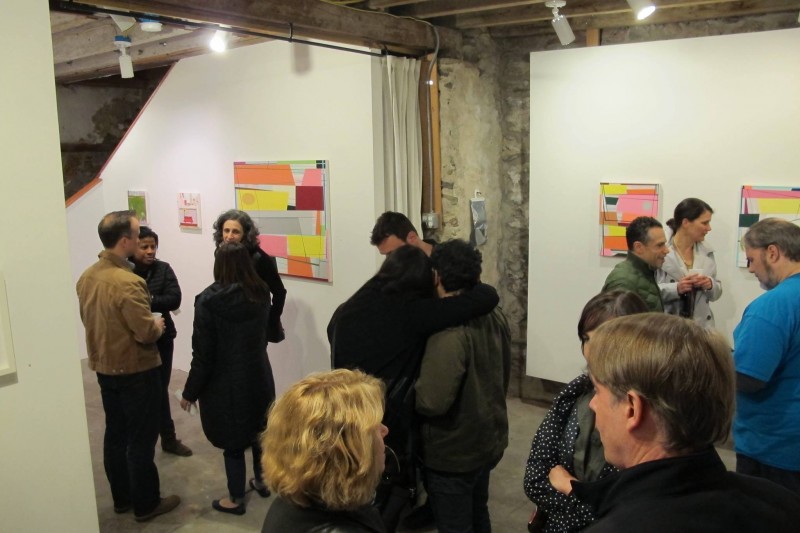
An important condition of the comprehension of art’s function, meaning, and import is the viewer. Without someone to experience the work, the work amounts to nothing. Although this basic relation of interdependency between artwork and viewer is a constitutive aspect of art’s existence as a cultural reality, the relation has been transformed in recent years as a rise in the levels of artistic production. In our contemporary juncture, art is a phenomenon that far exceeds its capacity to be experienced. In some sense, it names an excess that presupposes its experience.
An example of what I mean by this can be discerned in the amount of exhibitions that occur in Philadelphia, especially in the DIY arts community. Every first Friday of each calendar month, exhibitions by non-profit artist-run studio and gallery spaces are open to the public. Considering the sheer volume of such spaces, the number of exhibitions per year is extremely large (if 25 spaces exhibited exhibitions every month, this would amount to 300 exhibitions per year—which adds up, basically, to seeing an art exhibition almost every single day).
What, as viewers, are we meant to take from this much art? How can we reflect on the artwork produced if it comes and goes at such a rapid pace? To approach these questions, I believe that a specific point needs to be underscored–the seeming endless production of art and its exhibition in monthly shows is not an auxiliary part of cultural life in this city but, rather, is a symptomatic expression of deeper, less controlled forces.
Reception as flux
I have tried to call these forces the “superabundance” of production in a previous article. This superabundance emerges from a certain injunction to create endlessly and to be in a constant state of artistic activity. One could call this a kind of implacable cultural motility or a universalized state of activity; in other words, a tireless, unstoppable flux.
With this constant flux of activity, the capacity to view, look, and reflect about art is rendered significantly more difficult. The upshot to the universalization of endless artistic productivity is a certain prohibition against thinking about the art made and displayed. What matters is not what the art means or does—a judgement that often takes time to work out—but participation as a free-falling spectator in the mad flux of artistic creation.
The atmosphere of opening nights often intensifies this feeling of being lost ‘in the flow’—small, overcrowded spaces buzzing with conversation give the impression of animation and cultural vitality. Moreover, the fact that exhibitions by artist-run studio/gallery spaces fall on Fridays is also an interesting point worth underlining—Fridays are the culturally standardized beginning of ‘free time’ away from work. With this in mind, one could say that the experience of art falls within the social category of relaxation, entertainment, and non-work related enjoyment.
These conditions intensify the incapacity to properly reflect on the art exhibited. An immediate objection to this is obvious–avoid first Fridays and come see the exhibition on the following week/weekend. This is, of course, not at all an unreasonable alternative. The problem lies, however, in the way in which artistic production in this city, in the DIY arts community especially, is mediated by the mechanisms and instruments of cultural experience. The mechanisms of mediation shape the way we experience art; without them, it would not at all be clear where to go and view art. For example, which exhibition should one go and see at the 319 North 11th Street space? Should one head to the Fishtown area, Old City, South Philadelphia, or West Philadelphia? And how can the art produced in this city have a proper critical reception if the choices of where to visit are essentially arbitrary or based along lines of a social commitment to friends and family?
A possible distance?
It strikes me that if viewers of art in Philadelphia are to do more than just passively experience work as an act of obedience to the injunction to be constantly active, then there must be a certain resistance to this injunction. If art is socially important—and this is something that very much needs to be determined—then there needs to be a certain amount of time given to trying to figure in what way it is (or isn’t). Moreover, if art in Philadelphia is to have a serious, committed, and thoughtful reception—and such a reception comes from artists just as much as non-artists viewing the work—there needs to be some way of creating a distance from the imperative to make and exhibit.









